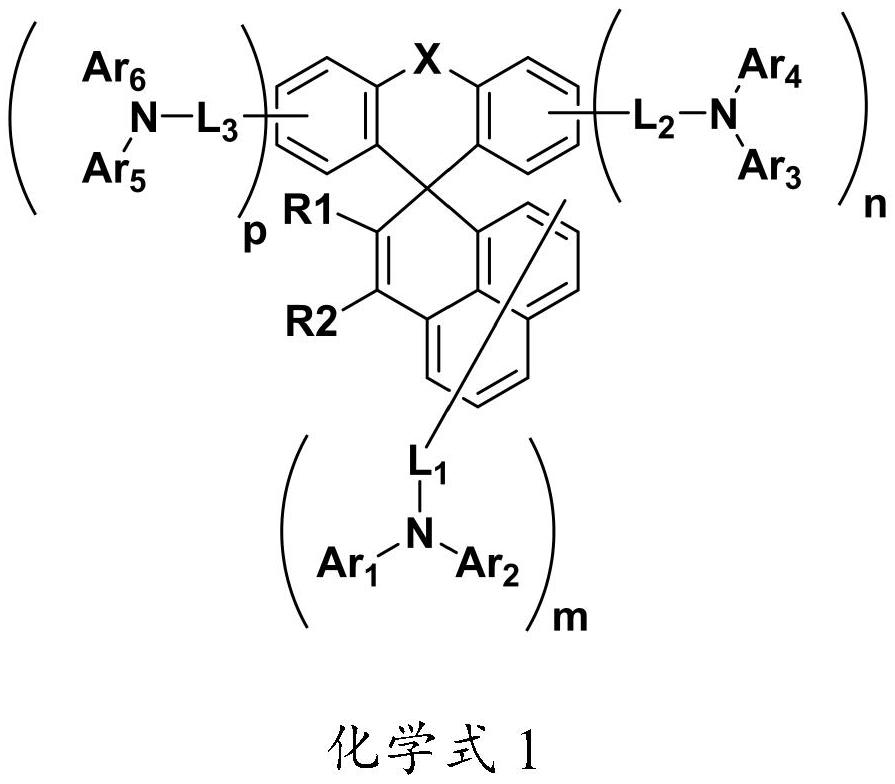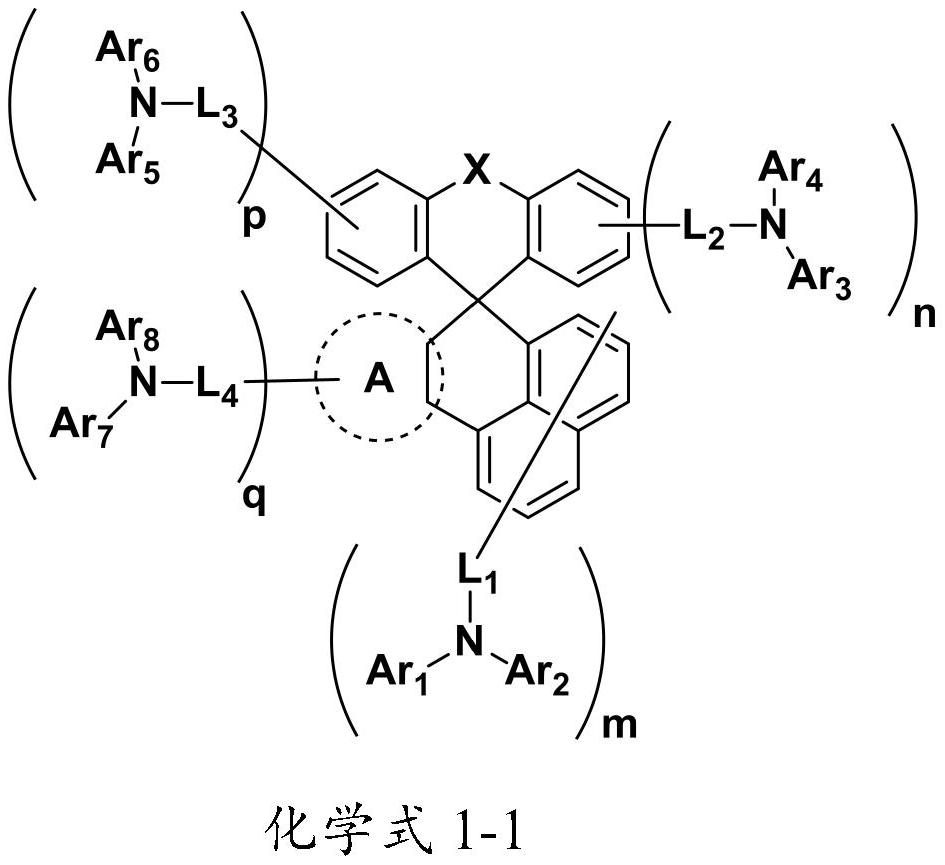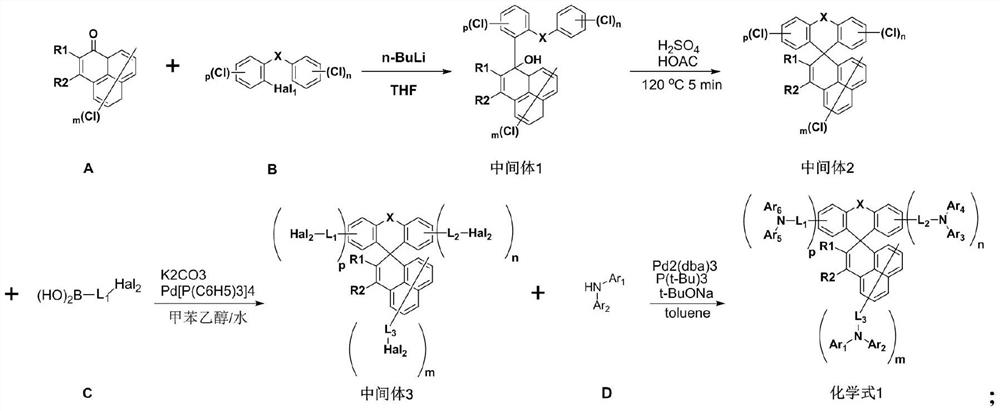Organic electroluminescent compound as well as preparation method and application thereof
An electroluminescence and compound technology, applied in the field of organic electroluminescence compounds and their preparation
- Summary
- Abstract
- Description
- Claims
- Application Information
AI Technical Summary
Problems solved by technology
Method used
Image
Examples
Embodiment 1
[0057] Embodiment 1: preparation compound HT-9
[0058]
[0059] 1. Under nitrogen protection, add raw material B-9 (50.00mmol) into a three-necked flask, add 160.00 mL of anhydrous tetrahydrofuran, then cool the reaction system to -78°C, add n-BuLi (60.00mmol) dropwise, and Stir at -78°C for 2 h to obtain a mixed solution. Material A-9 (50.00mmol) was dissolved in 150.00mL tetrahydrofuran solution, and then added dropwise to the above mixture. After the dropwise addition, the temperature was raised to room temperature, and stirred for 10h. Then, a saturated ammonium chloride solution was added to quench the reaction, the reaction solution was extracted three times with ethyl acetate, the organic phases were combined, washed with water and saturated brine, and dried with 20 g of anhydrous magnesium sulfate. Then add the dried solid to the ethanol solution, raise the temperature to 80°C, stir for 5 hours, then filter the solution while it is hot to obtain a solid, then rins...
Embodiment 2
[0072] Embodiment 2: preparation compound HT-25
[0073]
[0074] 1. Under the protection of nitrogen, add raw material B-25 (30.00mmol) into a three-necked flask, add 90.00 mL of anhydrous tetrahydrofuran, then cool the reaction system to -78°C, add n-BuLi (36.00mL) dropwise, and Stir at -78°C for 2 h to obtain a mixed solution. The raw material A-25 (30.00 mL) was dissolved in 70.00 mL of tetrahydrofuran solution, and then added dropwise to the above mixture. After the dropwise addition, the temperature was raised to room temperature, and stirred for 10 h. Then, add saturated ammonium chloride solution to quench the reaction, extract the reaction solution 3 times with ethyl acetate, combine the organic phases, and wash with water and saturated brine successively, then dry with 20g of anhydrous magnesium sulfate. Then add the dried solid to the ethanol solution, raise the temperature to 80°C, stir for 5 hours, then filter the solution while it is hot to obtain a solid, th...
Embodiment 3
[0086] Embodiment 3: preparation compound HT-42
[0087]
[0088] 1. Under nitrogen protection, add raw material B-42 (30.00mmol) into a three-necked flask, add 100.00 mL of anhydrous tetrahydrofuran, then cool the reaction system to -78°C, add n-BuLi (36.00mmol) dropwise, and Stir at -78°C for 2 h to obtain a mixed solution. The raw material A-42 (30.00 mmol) was dissolved in 100.00 mmol tetrahydrofuran solution, and then added dropwise to the mixture. After the dropwise addition, the temperature was raised to room temperature, and stirred for 10 h. Then, add saturated ammonium chloride solution to quench the reaction, extract the reaction solution 3 times with ethyl acetate, combine the organic phases, and wash with water and saturated brine successively, and then dry with 20g of anhydrous magnesium sulfate. Then add the dried solid to the ethanol solution, raise the temperature to 80°C, stir for 5 hours, then filter the solution while it is hot to obtain a solid, then r...
PUM
 Login to View More
Login to View More Abstract
Description
Claims
Application Information
 Login to View More
Login to View More - R&D
- Intellectual Property
- Life Sciences
- Materials
- Tech Scout
- Unparalleled Data Quality
- Higher Quality Content
- 60% Fewer Hallucinations
Browse by: Latest US Patents, China's latest patents, Technical Efficacy Thesaurus, Application Domain, Technology Topic, Popular Technical Reports.
© 2025 PatSnap. All rights reserved.Legal|Privacy policy|Modern Slavery Act Transparency Statement|Sitemap|About US| Contact US: help@patsnap.com



